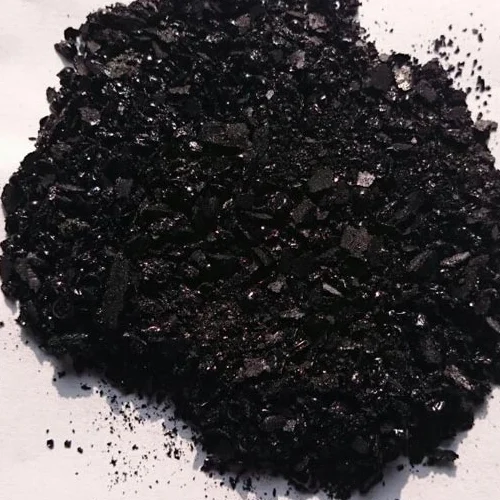Crafting Unique Shades with Custom Indigo Blue Fabric Dye for Creative Projects
The Art of Custom Indigo Blue Fabric Dyeing
Indigo blue is a color that holds a special place in the world of textiles. Renowned for its rich, deep hue, indigo dye has been used for centuries, creating a timeless appeal that transcends fashion trends. Today, custom indigo blue fabric dyeing has seen a resurgence, allowing artists and creators to explore this age-old craft in innovative ways.
The History of Indigo Dye
The use of indigo dye dates back thousands of years, with evidence of its use found in ancient civilizations around the world, from Egypt to India and Japan. Derived from the leaves of the indigo plant, the dye is prized for its unique ability to produce a vibrant blue that can vary from soft sky blues to deep navy shades. The process of dyeing fabric with indigo is both art and science, requiring careful handling to achieve the desired results.
The Dyeing Process
The traditional method of dyeing fabric with indigo involves several steps. First, fibers such as cotton, linen, or wool are prepared by scouring to remove any substances that might interfere with dye absorption. The indigo dye itself is typically created by fermenting the leaves of the indigo plant, a process that generates a vat of dye that is both potent and aromatic.
Once the dye vat is ready, the fabric is submerged in the liquid. The magic occurs when the fabric, pulled from the vat, is exposed to oxygen. This exposure causes a chemical reaction that transforms the yellowish-green dye into the iconic indigo blue. The more times the fabric is dipped, the darker the shade becomes. This layering process allows for a remarkable spectrum of blues, making it a favorite choice among textile artists.
Customization and Individuality
custom indigo blue fabric dye

One of the most appealing aspects of custom indigo blue fabric dyeing is the ability to personalize and create unique designs. Artists and designers can experiment with various techniques, such as tie-dyeing, shibori, or resist dyeing, to craft patterns that reflect their individual styles. The use of stencils or freehand techniques can lead to intricate motifs that add depth and character to the fabric.
Furthermore, custom fabric dyeing allows for the use of sustainable practices. Many artisans choose to use natural indigo dye derived from indigofera plants, minimizing the environmental impact associated with synthetic dyes. By embracing eco-friendly methods, creators contribute to a more sustainable textile industry while delivering vibrant and unique products.
Applications in Fashion and Home Decor
The popularity of custom indigo dyed fabrics has extended into various sectors, including fashion and home decor. Designers incorporate indigo fabrics into their collections, resulting in garments that are both stylish and deeply rooted in tradition. From casual wear to formal attire, indigo can elevate any outfit with its rich color palette.
In the realm of home decor, custom indigo blue fabrics are used for curtains, cushions, and upholstery, creating serene and inviting spaces. The calming nature of the blue hue adds an element of tranquility, making it ideal for bedrooms and living areas.
Conclusion
Custom indigo blue fabric dyeing is more than just a technique; it is a celebration of heritage, craftsmanship, and creativity. As artists continue to innovate and explore this timeless dyeing method, the possibilities are endless. Whether through rich historical practices or modern interpretations, indigo remains a vibrant symbol of artistic expression. In a world increasingly focused on uniqueness and sustainability, custom indigo blue fabric dyeing offers a perfect blend of tradition and individuality, inviting creators to leave their mark on the textile landscape.
-
Sulphur Black Dyes in Daily Use
NewsMay.07,2025
-
Indigo Dyeing for Daily Life
NewsMay.07,2025
-
Indigo Dye Production and Its Growing Demand
NewsMay.07,2025
-
Color That Lasts
NewsMay.07,2025
-
Bromo Indigo for Modern Use
NewsMay.07,2025
-
Blue From Nature
NewsMay.07,2025
-
The Timeless Color in Fashion and Textiles
NewsApr.10,2025

Sulphur Black
1.Name: sulphur black; Sulfur Black; Sulphur Black 1;
2.Structure formula:
3.Molecule formula: C6H4N2O5
4.CAS No.: 1326-82-5
5.HS code: 32041911
6.Product specification:Appearance:black phosphorus flakes; black liquid

Bromo Indigo; Vat Bromo-Indigo; C.I.Vat Blue 5
1.Name: Bromo indigo; Vat bromo-indigo; C.I.Vat blue 5;
2.Structure formula:
3.Molecule formula: C16H6Br4N2O2
4.CAS No.: 2475-31-2
5.HS code: 3204151000 6.Major usage and instruction: Be mainly used to dye cotton fabrics.

Indigo Blue Vat Blue
1.Name: indigo blue,vat blue 1,
2.Structure formula:
3.Molecule formula: C16H10N2O2
4.. CAS No.: 482-89-3
5.Molecule weight: 262.62
6.HS code: 3204151000
7.Major usage and instruction: Be mainly used to dye cotton fabrics.

